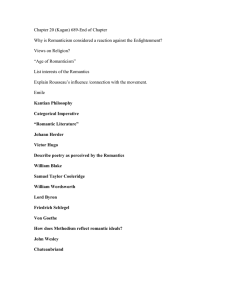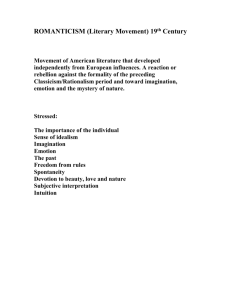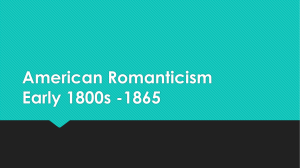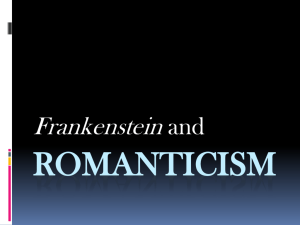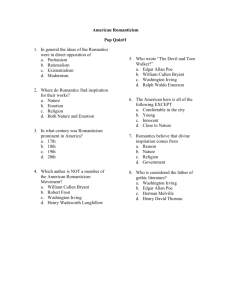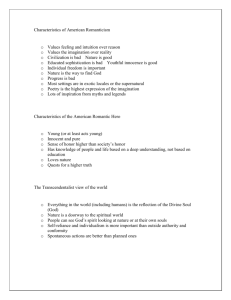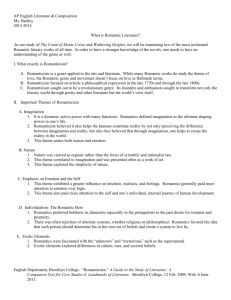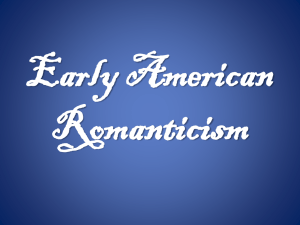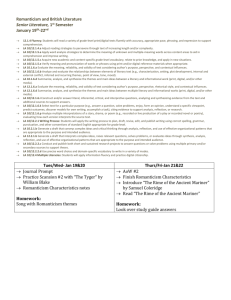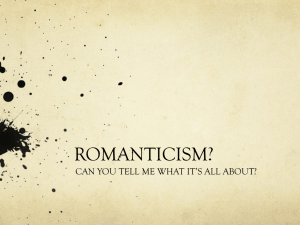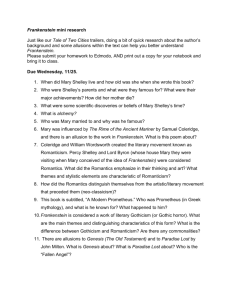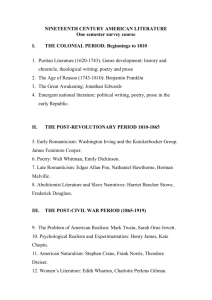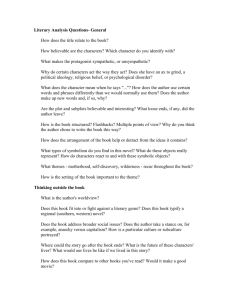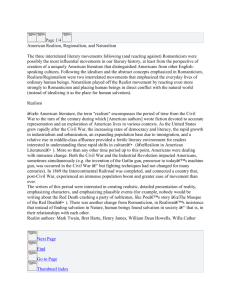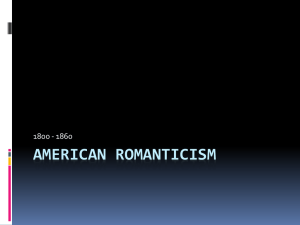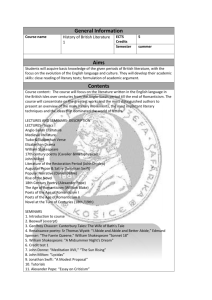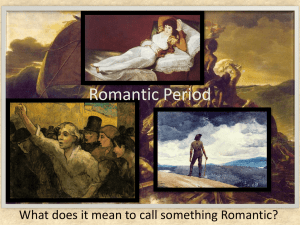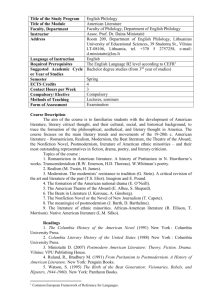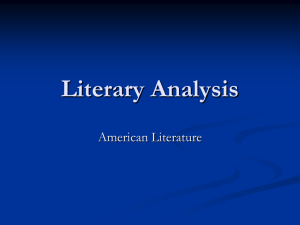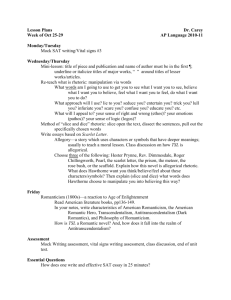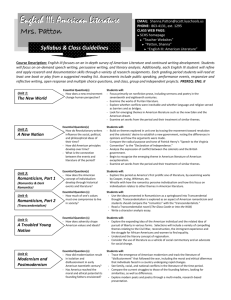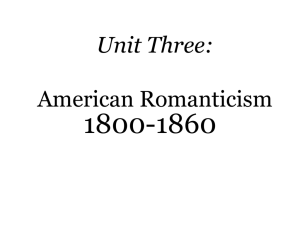American Romanticism.doc
advertisement
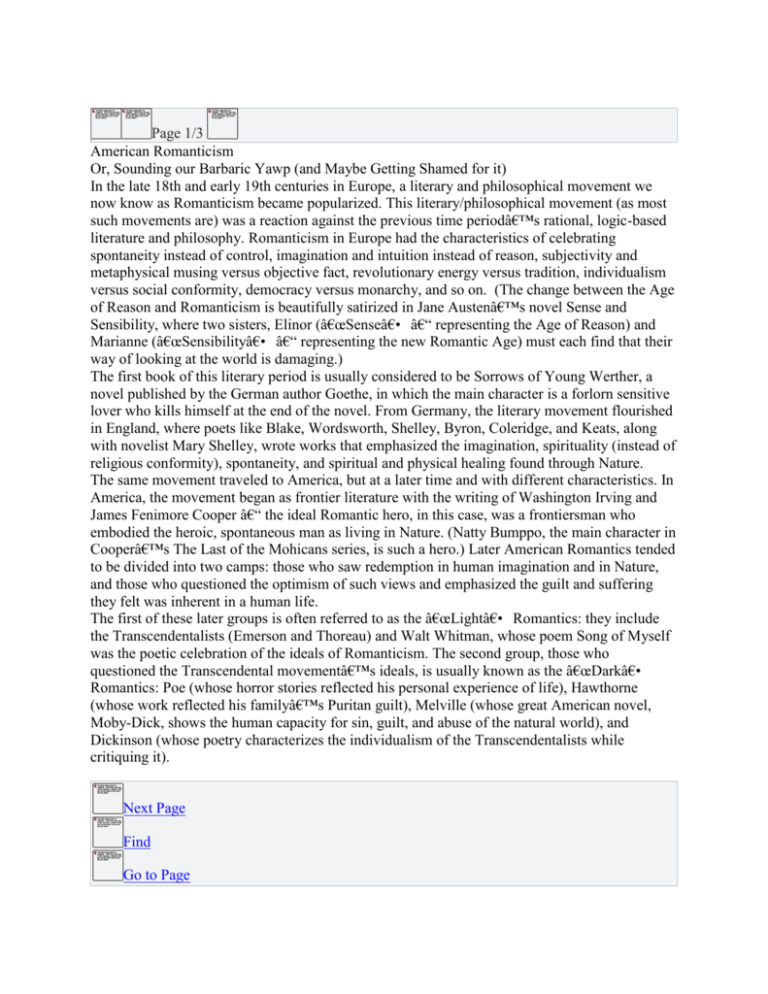
Page 1/3 American Romanticism Or, Sounding our Barbaric Yawp (and Maybe Getting Shamed for it) In the late 18th and early 19th centuries in Europe, a literary and philosophical movement we now know as Romanticism became popularized. This literary/philosophical movement (as most such movements are) was a reaction against the previous time period’s rational, logic-based literature and philosophy. Romanticism in Europe had the characteristics of celebrating spontaneity instead of control, imagination and intuition instead of reason, subjectivity and metaphysical musing versus objective fact, revolutionary energy versus tradition, individualism versus social conformity, democracy versus monarchy, and so on. (The change between the Age of Reason and Romanticism is beautifully satirized in Jane Austen’s novel Sense and Sensibility, where two sisters, Elinor (“Sense― – representing the Age of Reason) and Marianne (“Sensibility― – representing the new Romantic Age) must each find that their way of looking at the world is damaging.) The first book of this literary period is usually considered to be Sorrows of Young Werther, a novel published by the German author Goethe, in which the main character is a forlorn sensitive lover who kills himself at the end of the novel. From Germany, the literary movement flourished in England, where poets like Blake, Wordsworth, Shelley, Byron, Coleridge, and Keats, along with novelist Mary Shelley, wrote works that emphasized the imagination, spirituality (instead of religious conformity), spontaneity, and spiritual and physical healing found through Nature. The same movement traveled to America, but at a later time and with different characteristics. In America, the movement began as frontier literature with the writing of Washington Irving and James Fenimore Cooper – the ideal Romantic hero, in this case, was a frontiersman who embodied the heroic, spontaneous man as living in Nature. (Natty Bumppo, the main character in Cooper’s The Last of the Mohicans series, is such a hero.) Later American Romantics tended to be divided into two camps: those who saw redemption in human imagination and in Nature, and those who questioned the optimism of such views and emphasized the guilt and suffering they felt was inherent in a human life. The first of these later groups is often referred to as the “Light― Romantics: they include the Transcendentalists (Emerson and Thoreau) and Walt Whitman, whose poem Song of Myself was the poetic celebration of the ideals of Romanticism. The second group, those who questioned the Transcendental movement’s ideals, is usually known as the “Dark― Romantics: Poe (whose horror stories reflected his personal experience of life), Hawthorne (whose work reflected his family’s Puritan guilt), Melville (whose great American novel, Moby-Dick, shows the human capacity for sin, guilt, and abuse of the natural world), and Dickinson (whose poetry characterizes the individualism of the Transcendentalists while critiquing it). Next Page Find Go to Page Thumbnail Index Image View Download a Copy Close
